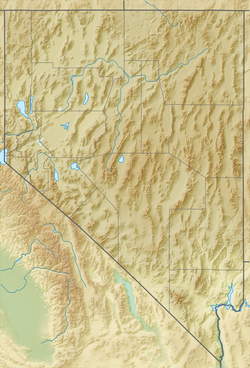| Elephant Rock | |
|---|---|
 South aspect of the arch | |
| Highest point | |
| Elevation | 1,926 ft (587 m) [1] |
| Prominence | 32 ft (9.8 m) [2] |
| Parent peak | The 5-Arch [2] |
| Isolation | 0.78 mi (1.26 km) [2] |
| Coordinates | 36°25′42″N114°27′39″W / 36.4283735°N 114.4609548°W [1] |
| Geography | |
| Country | United States |
| State | Nevada |
| County | Clark |
| Protected area | Valley of Fire State Park |
| Parent range | Great Basin Ranges [3] |
| Topo map | USGS Valley of Fire East |
| Geology | |
| Rock age | Early Jurassic |
| Rock type | Aztec Sandstone |
| Climbing | |
| Easiest route | class 3 scrambling [2] |
Elephant Rock is a 1,926-foot-elevation (587-meter) summit in Clark County, Nevada, United States.


